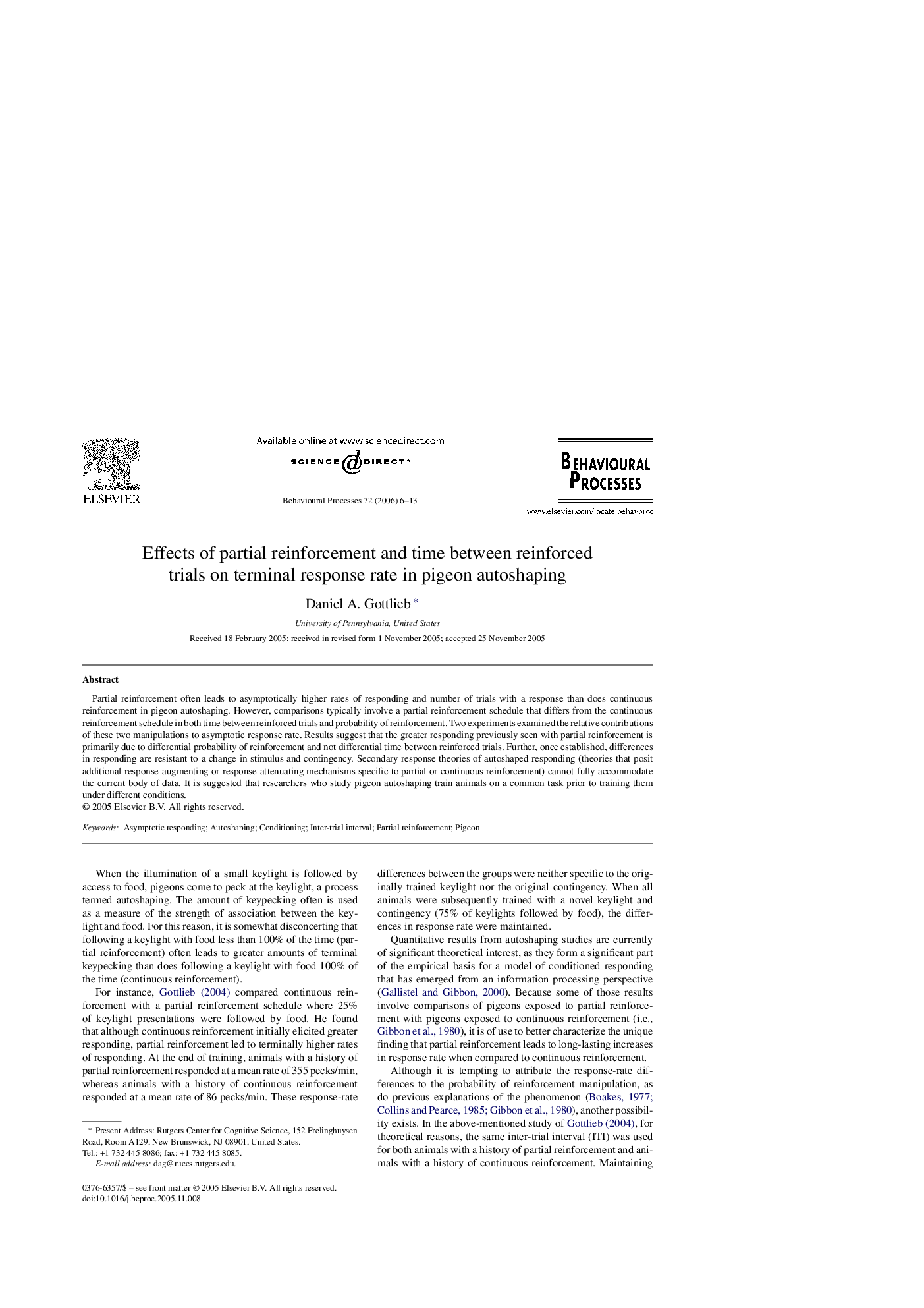| Article ID | Journal | Published Year | Pages | File Type |
|---|---|---|---|---|
| 2427967 | Behavioural Processes | 2006 | 8 Pages |
Abstract
Partial reinforcement often leads to asymptotically higher rates of responding and number of trials with a response than does continuous reinforcement in pigeon autoshaping. However, comparisons typically involve a partial reinforcement schedule that differs from the continuous reinforcement schedule in both time between reinforced trials and probability of reinforcement. Two experiments examined the relative contributions of these two manipulations to asymptotic response rate. Results suggest that the greater responding previously seen with partial reinforcement is primarily due to differential probability of reinforcement and not differential time between reinforced trials. Further, once established, differences in responding are resistant to a change in stimulus and contingency. Secondary response theories of autoshaped responding (theories that posit additional response-augmenting or response-attenuating mechanisms specific to partial or continuous reinforcement) cannot fully accommodate the current body of data. It is suggested that researchers who study pigeon autoshaping train animals on a common task prior to training them under different conditions.
Related Topics
Life Sciences
Agricultural and Biological Sciences
Animal Science and Zoology
Authors
Daniel A. Gottlieb,
